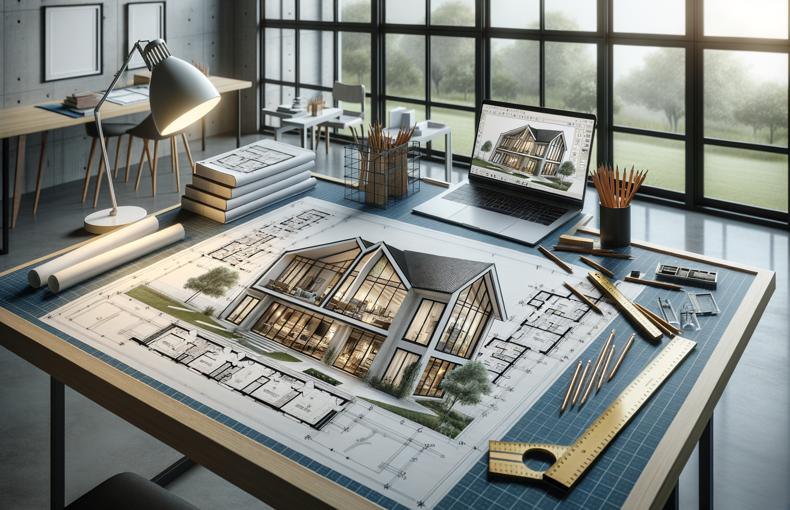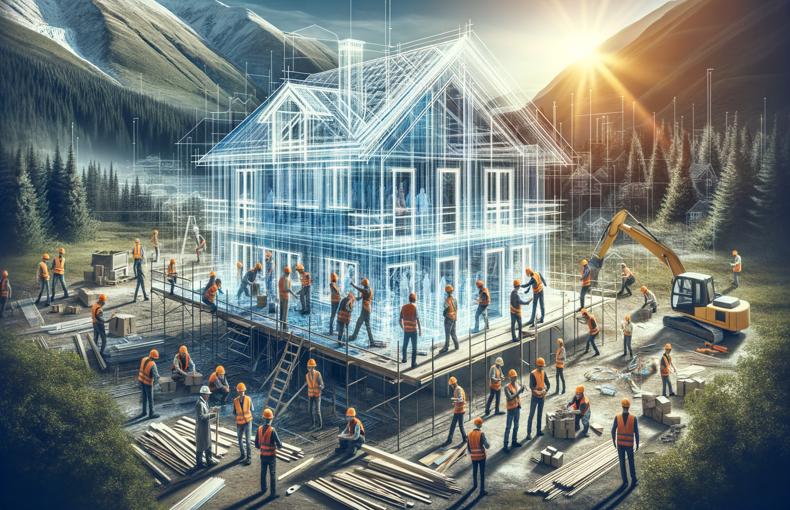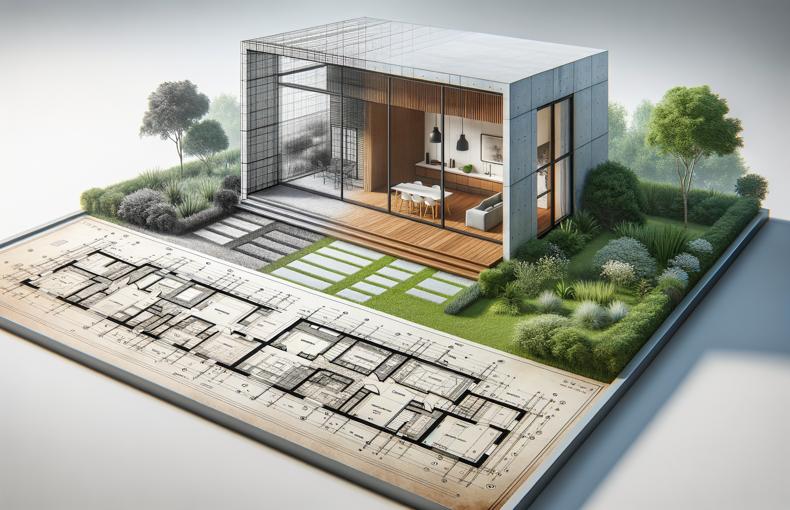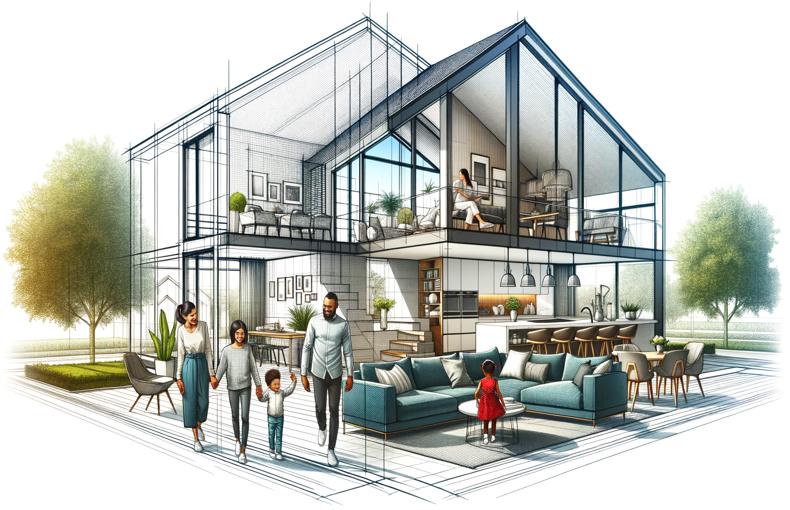The Future of Home Design: How Architectural Drafters Are Shaping the Way We Live
As technology and lifestyle evolve, so do our homes. The way we live, work, and relax has dramatically transformed over the years, with increasing demand for functionality, sustainability, and personalization. At the heart of this shift are architectural drafters — the unsung heroes shaping the future of home design. Whether you’re building your dream home or renovating an existing space, understanding the role of architectural drafters is key to creating homes that meet the needs of the modern world. In this post, we’ll explore the future of home design and how architectural drafters are leading the way in shaping how we live.
The Evolving Role of Architectural Drafters
Gone are the days when architectural drafters were limited to pen and paper. Today, their work goes far beyond traditional blueprints. Modern architectural drafters leverage cutting-edge technologies such as 3D modeling software, Building Information Modeling (BIM), and virtual reality to create more detailed and accurate designs.
With these advancements, drafters can:
- Create precise plans that integrate complex systems like electrical, plumbing, and HVAC, ensuring that all elements of the home work harmoniously.
- Visualize spaces in 3D, allowing homeowners to see what their house will look like before construction begins.
- Incorporate smart home technology into the design, ensuring that homes are future-proof and ready for the next wave of tech innovations.
The role of drafters has shifted from merely translating ideas into technical drawings to becoming key collaborators in shaping design solutions that meet modern needs.
Technology’s Impact on Home Design
Technological advancements are playing a pivotal role in transforming how homes are designed. From smart homes to energy-efficient buildings, the integration of technology is reshaping the home environment.
-
3D Modeling and Virtual Reality
Architectural drafters are now able to create 3D models that allow homeowners to virtually walk through their future homes. This immersive experience helps homeowners make informed decisions about space utilization, interior layouts, and materials. Virtual reality tools are also enabling clients to see and interact with various design options, helping them feel more involved in the design process. -
Sustainable Design
As concerns over climate change grow, there’s an increasing demand for eco-friendly homes. Architectural drafters are at the forefront of this movement, designing homes that maximize energy efficiency. From using sustainable materials to incorporating passive solar design, drafters are ensuring that future homes leave a smaller carbon footprint. -
Smart Home Integration
With the rise of smart home technology, drafters are responsible for integrating systems like automated lighting, security, heating, and cooling into the design. These technologies not only add convenience but also improve energy efficiency, making homes more sustainable in the long term.
Personalized Living Spaces
One of the key trends in modern home design is personalization. Homeowners are seeking spaces that reflect their lifestyles, personalities, and needs. Architectural drafters play an essential role in bringing these personalized visions to life.
-
Flexible Spaces: Drafters are designing homes with multi-functional spaces that can easily adapt to changing needs. Think of a guest room that doubles as a home office, or an open-plan living area that can be transformed into an entertainment zone.
-
Outdoor Living: As people spend more time at home, outdoor living spaces are becoming an extension of the indoors. Drafters are creating seamless transitions between indoor and outdoor spaces, ensuring that patios, gardens, and decks are both functional and inviting.
-
Future-Proofing Homes: Architectural drafters are also focused on designing homes that can evolve with homeowners over time. Whether it’s planning for future additions, or considering accessibility for aging in place, future-proofing is an essential element of modern home design.
Sustainability in Home Design
Sustainability is no longer a trend; it’s becoming a fundamental aspect of home design. Architectural drafters are deeply involved in creating homes that are energy-efficient and environmentally friendly. Some of the ways drafters are incorporating sustainability into their designs include:
- Energy-Efficient Layouts: Drafters design homes that make the most of natural light and ventilation, reducing the need for artificial lighting and climate control systems.
- Sustainable Materials: From recycled building materials to low-VOC paints, drafters are specifying materials that have a lower environmental impact.
- Green Building Certifications: Architectural drafters are helping homeowners achieve certifications such as LEED (Leadership in Energy and Environmental Design) by designing homes that meet strict sustainability standards.
Collaboration in Home Design
Architectural drafters work closely with architects, contractors, and homeowners to ensure that every aspect of the home design is thoroughly planned. This collaboration is essential for:
- Cost Efficiency: By working with all parties from the outset, drafters help prevent costly design changes or construction delays.
- Code Compliance: Drafters are well-versed in local building codes and regulations, ensuring that the home’s design is compliant from the start.
- Creative Problem-Solving: Drafters bring their technical expertise to the table, offering innovative solutions for design challenges such as small spaces or complex terrain.
The Future: What’s Next?
As we look ahead, it’s clear that architectural drafters will continue to play a pivotal role in shaping the homes of the future. Here are some emerging trends that drafters will likely influence:
-
Biophilic Design
The concept of biophilic design, which emphasizes a connection between indoor spaces and nature, is gaining traction. Drafters will integrate more natural elements into homes, such as green walls, indoor gardens, and natural materials. -
Modular and Prefabricated Homes
Modular and prefabricated homes are becoming popular due to their cost-efficiency and speed of construction. Drafters will be at the forefront of designing these homes to ensure they are both functional and aesthetically pleasing. -
Net-Zero Energy Homes
Homes that produce as much energy as they consume are the future. Architectural drafters will be essential in designing these energy-efficient homes, incorporating features like solar panels, energy storage systems, and advanced insulation.
Conclusion
Architectural drafters are shaping the future of home design in ways that go beyond the traditional blueprints. Through their use of modern technology, focus on sustainability, and commitment to personalized design, they are creating homes that meet the demands of today’s lifestyles while preparing for tomorrow’s challenges. Whether you’re building from scratch or renovating an existing space, working with an architectural drafter ensures that your home will be functional, future-proof, and tailored to your needs.











